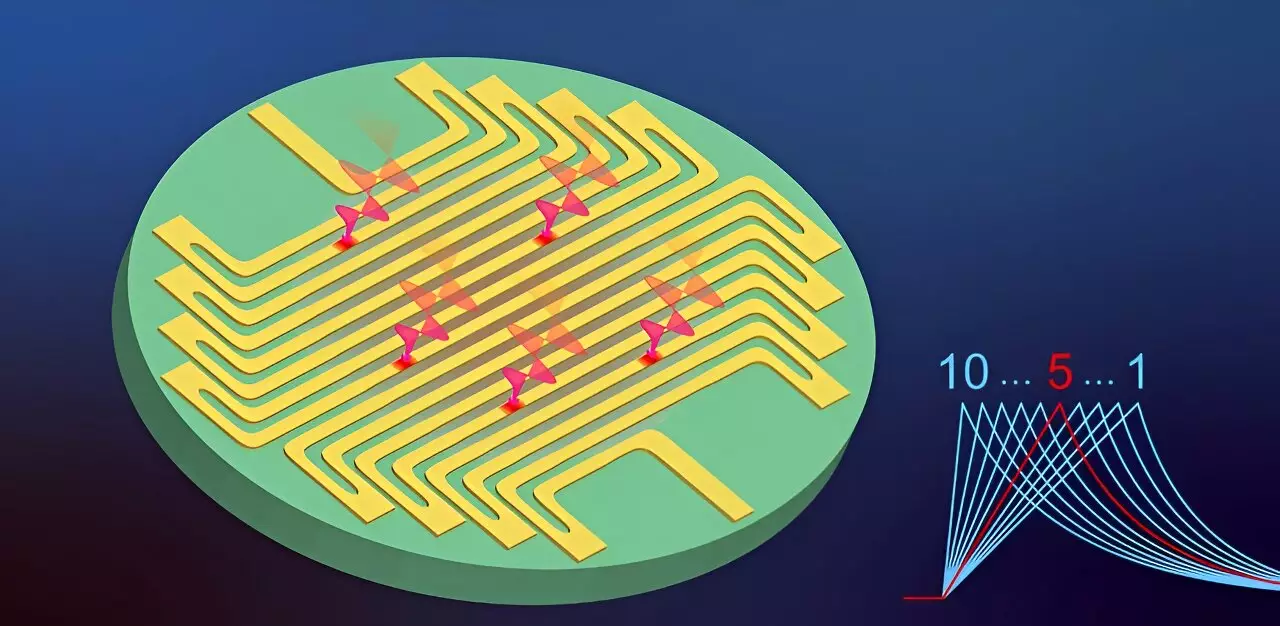Quantum information technology has revolutionized various fields, and the use of single photons as qubits is a prominent strategy in this domain. Photon-number-resolving detectors (PNRDs) are essential for accurately determining the number of photons in quantum systems. Superconducting nanostrip single-photon detectors (SNSPDs) have emerged as the leading technology for single-photon detection due to their high efficiency and speed. However, the photon-number resolution of SNSPD-based PNRDs has faced challenges in achieving a balance between fidelity and dynamic range.
Existing SNSPD arrays have struggled with fidelity constraints when it comes to photon-number resolution. These detectors, known as quasi-PNRDs, divide incident photons among a limited number of pixels, limiting their resolving fidelity. While SNSPDs offer near-perfect efficiency and high-speed performance, their ability to accurately record the number of incident photons has been limited, hampering their potential in quantum computation, quantum communication, and quantum metrology applications.
Improved Performance through Strip Width and Total Inductance
Researchers from the Shanghai Institute of Microsystem and Information Technology (SIMIT), Chinese Academy of Sciences, have made significant progress in enhancing the photon-number-resolving capability of SNSPDs. By increasing the strip width or total inductance, they overcame bandwidth limitations and timing jitter in readout electronics. This breakthrough led to stretched rising edges and improved signal-to-noise ratio in the response pulses, resulting in enhanced readout fidelity.
The researchers widened the superconducting strip to a micrometer scale, resulting in the creation of the superconducting microstrip single-photon detector (SMSPD). Surprisingly, even without the use of cryogenic amplifiers, the SMSPD achieved true-photon-number resolution up to 10. This groundbreaking observation marks a significant advancement in the field, as previous SNSPDs were only able to resolve up to 3-4 photon numbers, limiting their dynamic range.
To enable real-time photon-number readout, the researchers proposed a dual-channel timing setup. This approach not only significantly reduced data acquisition requirements but also simplified the readout setup. By reducing the complexity and improving the efficiency of the readout process, this innovation paves the way for practical implementations of photon-number-resolving detectors in various quantum information technology applications.
The researchers also demonstrated the utility of their system in quantum information technology by creating a quantum random-number generator based on sampling the parity of a coherent state. This novel approach ensures unbiasedness, robustness against experimental imperfections and environmental noise, and resistance to eavesdropping. The combination of high-fidelity and large-dynamic-range photon-number resolution offered by the SMSPD opens up new possibilities for advanced quantum information processing and secure communication protocols.
Future Implications
With further improvements in the detection efficiency of SMSPDs, this technology could become readily accessible for various optical quantum information applications. The remarkable results achieved by the researchers highlight the potential of SNSPDs or SMSPDs in achieving high-fidelity and large-dynamic-range photon-number resolution. These advancements in PNRDs have significant implications for the advancement of quantum information technology and its widespread implementation in various scientific and technological fields.
The recent advancements in superconducting nanostrip single-photon detectors have paved the way for enhanced photon-number resolution. The breakthrough achieved by the researchers from the Shanghai Institute of Microsystem and Information Technology exemplifies the potential of SNSPDs and SMSPDs in quantum information technology applications. These developments mark a significant milestone in the field of PNRDs and open up new possibilities for high-precision quantum computation, communication, and metrology.


Leave a Reply